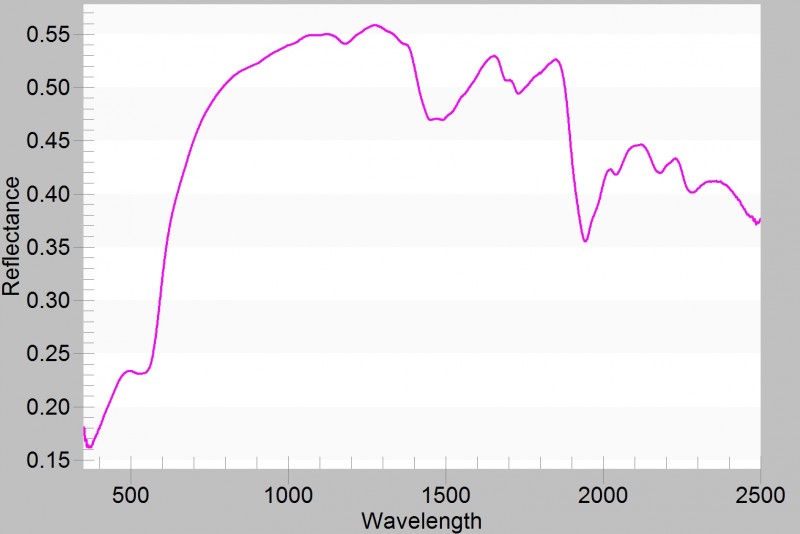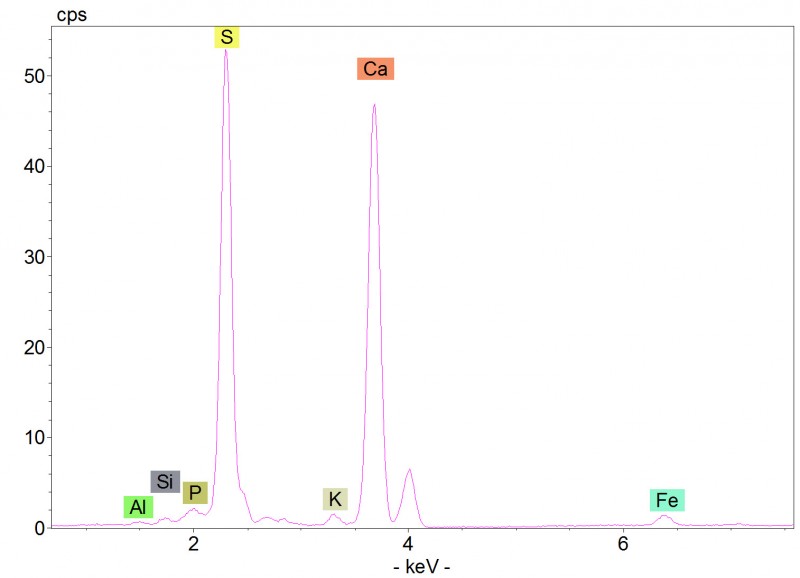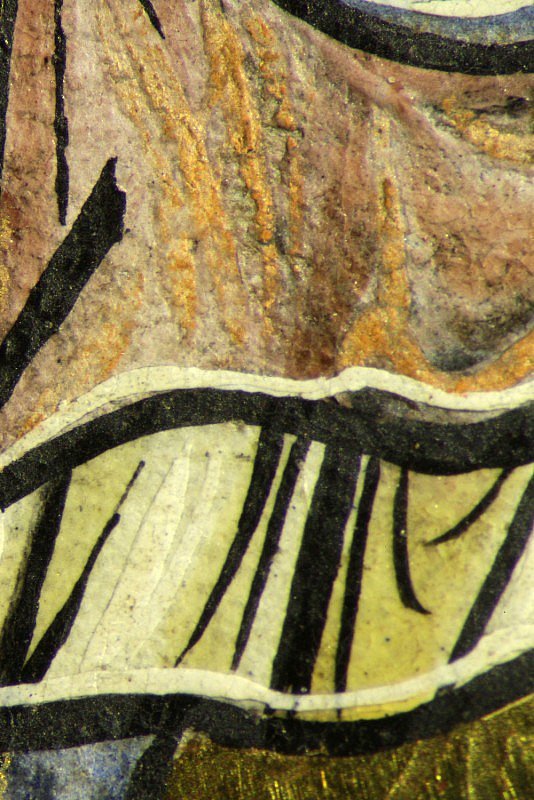Gold tooling
Artists' Techniques
Lines and dots were incised in the highly burnished gold background of many illuminations, from the full-page Crucifixion to the small Calendar initials. In the Crucifixion, the tooling accentuates the form of the cross and embellishes the halos of the richly painted figures. The embossing visible on the surface is, however, an unintended consequence of applying punched motifs to the burnished gold Beatus initial on the reverse of the leaf.




Historiated initial D with David slaying Goliath (Psalm 52)
Pink tones in this folio are opaque and consist of a mixture of an organic red dye and gypsum (hotspot 2). Various red dyes were available in England at this time, such as Brazilwood, madder and kermes. A variety of red and pink hues can be obtained by controlling the amount of alum added to these dyes.
The modelling of draperies is particularly dynamic in this folio. David’s mantle is modelled over a pink base layer that contains an insect-derived dye, with red lead highlights. The inner part of the mantle is painted with ultramarine blue. The tunic is modelled with a yellow glaze over a white base layer of chalk (hotspot 3). White lead highlights and thick black outlines further define the folds.
